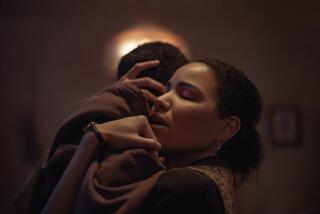Book Review : When Our Grandparents Were Young
- Share via
Children of the City: How Our Grandparents Grew Up by David Nasaw (Doubleday: $18.95)
Seventy-five years ago, David Nasaw writes in “Children of the City,” the streets of our cities teemed with children.
Visitors to New York’s Lower East Side were greeted by “a great swarming” of boys and girls, choking the sidewalks and filling the alleyways, playing, hustling, looking for entertainment wherever they could find it.
According to Prof. Nasaw, it was this restless young population that shaped American values in the first half of this century. “Just as today, children lead us into the computer age, 75 years ago they led the way into the 20th Century.”
Relying primarily on autobiographies and oral histories, as well as the contemporary reports of reformers, settlement-house workers, court officials and journalists, Nasaw builds an extraordinarily vivid image of working-class childhood at the turn of the century.
‘Tuberculosis Raged’
Amid the smoke, soot and grime of city air, the constant din of horse-drawn traffic, the appalling stench from clogged sewers and heaped-up garbage, the children seemed to thrive. To be sure, “tuberculosis raged and babies died of exposure or cold or heat or spoiled milk,” but those who survived entered the charmed world of the street traders.
These were children of working-class parents--most of them recent immigrants--who were put to work at an early age as peddlers, errand boys, messengers and newsboys. They quickly became fledgling entrepreneurs.
“They learned how to sell,” Nasaw writes, “and, just as important, that it was the salesman’s job to pitch and the customer’s to resist. All was fair in the marketplace.” On a small scale, they lived out the American dream and carried into adult life the conviction that, with enough business sense and energy, anyone could succeed.
They also learned how to entertain. Children sang, danced, mimed and clowned for pennies, and many of these youthful entertainers went on to become stars. Eddie Cantor, the Marx Brothers, Al Jolson, Fanny Brice, Sophie Tucker and dozens of others learned their trade as sidewalk performers.
Brought Values to Hollywood
As adults, the former street kids brought their values to Hollywood, and so affected the mainstream of American popular culture. The gangster movies of the ‘30s, according to Nasaw, represented “an exaggerated, almost mythologized form of the children of the street.”
“George Jessel dressed in his Uncle Sam suit, Eddie Cantor selling war bonds . . . Irving Berlin writing and singing ‘God Bless America’--all were unmistakably former street kids, but they were also 100% American and, as they never ceased to remind themselves and their audiences, very proud of it.”
In re-creating the life of working-class children, Nasaw has allowed himself to be beguiled by the autobiographies of entertainers. They carry more weight in his account than other kinds of contemporary sources, and to an extent their jokiness and gusto mask the bleakness and cruelty of the street world. They also give the book its geographical bias: Though Philadelphia and Portland and Detroit are mentioned once in a while, this is essentially a study of New York childhood.
But these are minor quibbles, for “Children of the City” is a skillfully written, engrossing and memorable portrait of a unique moment in American life when the streets were full of penny candy shops, Nickelodeons, and lobster palaces--and thousands of children.
More to Read
Sign up for our Book Club newsletter
Get the latest news, events and more from the Los Angeles Times Book Club, and help us get L.A. reading and talking.
You may occasionally receive promotional content from the Los Angeles Times.






